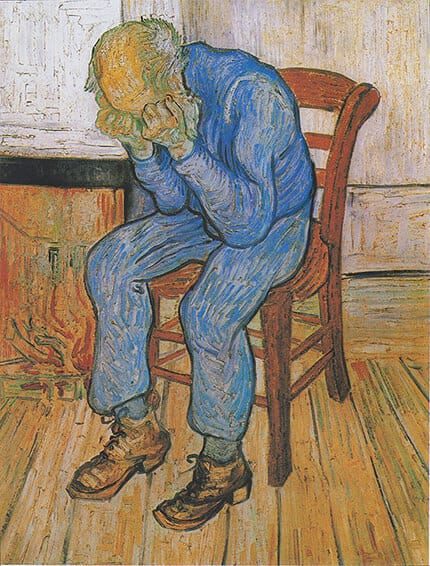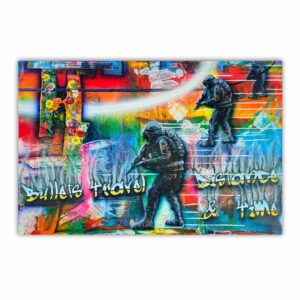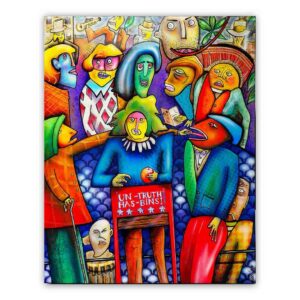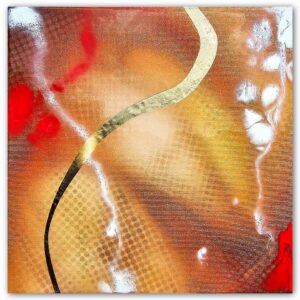- [email protected]
- +353 (0)86 224 0139
- Free Shipping Worldwide
Increasing Self-Confidence as An Artist
Individuals who are interested in exploring their creative potentials often run into a dilemma, whether it is a confidence issue or an insecurity about their skills. Some find it challenging to muster up the courage to do something new or a fear of being judged by others. Self-confidence as an artist has the ability to affect the quality of your art.
Reading Time: 15 minutes
TL:DR
- Embrace self-expression by exploring different art forms, styles, and techniques to boost your confidence as an artist.
- Seek feedback and constructive criticism from fellow artists or mentors to gain valuable insights and improve your skills.
- Practice self-care, positive affirmations, and visualisation techniques to cultivate a positive mindset and enhance your self-confidence in your artistic abilities.
Introduction: Reliable Ways of Increasing Self-Confidence as An Artist
The most crippling problem for an artist is a lack of confidence. This post will discuss ways of increasing self-confidence in your artwork, overcome self-doubt, and thrive as a creative artist.
You put in a lot of effort to create your work of art. You adore the process, relish every minute of it, and are eager to share it with the rest of the world. You have put your whole heart and soul into it. But when it is finished, you just stare at it…..
The longer you look, the worse you feel. You notice that something is missing. It does not appear to be correct. Nobody is going to believe it. Nobody is going to look at it. You shake your head, disappointed. You yank the canvas from the easel and and decide to simply throw it away. But hold on! Do not discard it just yet!
Every one of us has been there. Making art is fraught with anxiety: the fear of the blank page, the fear of not being able to achieve perfection, the fear of imposter syndrome.
The list goes on and on. So, let us discuss how to be proud of your art. How to love what you created without looking for flaws and beating yourself up about them.
By the end of this article, you will have learned seven reliable ways to boost your artistic self-confidence and minimise artistic self-doubt.
How to Build Confidence and Self Esteem as an Artist
How can you boost your artistic self-esteem? Artists must be able to express themselves creatively through art and feel confident in their abilities.
Creative people frequently lack either self-confidence or self-esteem because they may feel they do not fit in or find it difficult to make progress in their work.
Here are some pointers on how to boost your self-esteem and confidence as an artist:
1. Art is a Journey, Not a Destination
Consider your art to be a journey rather than a destination. It is an ongoing journey that will last forever. And do not get me wrong: this is not a bad thing. It would be the end once you arrived at your destination. You would come to a halt. There would be no incentive to continue.
So, always keep in mind that you will create something far superior to what you have today. With a growth mindset like this, you will eventually learn to accept (and love) what you have created.
Concentrate on making each piece of art better than the one before it. This will help you to enhance your self-esteem as an artist.
2. Focus on Your Learning Curve
A learning curve is a term that describes the rate at which a person learns. Some argue that increasing your focus on your subject is the best way to accelerate this rate. This can assist a creative person in learning faster and completing the learning process more quickly – but it should never be a race!
Some of your artwork will not be exactly as you imagined it and may fall short of your expectations. But does that mean the end is near? Certainly not!
Do not let minor setbacks deter you. Do not get rid of the artwork. Instead, examine it and try to learn from it. What could you have done differently? Examine it from a different perspective, or solicit feedback from another artist.
We are frequently our harshest critics. Instead of assisting us in growing and learning, our own criticism holds us back. Do not put yourself through that.
Instead, consider every piece of art you make to be a learning experience, concentrate on the process rather than the failures. Acknowledge what you did well and what could have been done better.
With this approach, you will continue to learn, gain self-confidence as an artist, and be proud of your work.
3. Self-Confidence Meaning: Have Realistic Expectations
While our expectations can motivate us to strive for the best, they can also prevent us from doing so. It is true, as ironic as it may sound.
Never expect your artwork to be flawless. Accept that you are human and that your art may not be perfect. But that is fine. At the very least, you did not give in to your fears. Always look on the positive side.
Make certain that your unrealistic expectations do not give rise to negative thoughts. If you are insecure about your art or are afraid to create it, identify those thoughts and use rational thinking to bring them back to reality. You own your work; it is an authentic piece, and you must treat it as such.
4. Stop Comparing Yourself to Other Artists
Do not be afraid of being judged, of being regarded as a lesser artist than another, or of artistic comparison. It does not really matter because it is just someone else’s opinion.
Another important aspect of not feeling bad about your art, or even other aspects of your life, is to stop comparing yourself to others. Remember that it is merely a subjective judgment of your own worth, and negative self-talk can have a negative impact on your mental health over time. It can be very frustrating to compare your art to the work of others.
This is wrong in so many ways. To begin with, it is a great disservice to your artistic abilities. You have a creative gift that many others do not. Instead of wallowing in self-doubt and artist insecurity, why not value that gift?
One of the main reasons you are afraid to create, or insecure about your art, is because you compare yourself to others.
This is not to say that you should not look at the work of other acclaimed artists, draw inspiration from it, and learn from it. Just remember not to use their work as a basis for evaluating for your own. Compare yourself to yourself, experiment, learn and move forwards.
5. Self-Doubt is Not so Bad
When you realise that everyone has doubts, self-doubt is not so bad. It can be difficult to believe in yourself or your abilities at times, but you know deep down that you are worthy of whatever you do. It can take time to develop artistic confidence, but the only way to improve is to keep practicing.
In our quest to learn how to crush self-doubt, we underestimate one important fact: self-doubt is not as bad as we think it is. We see it as the villain and fail to see the friend in this enemy.
Self-doubt does not exist to “destroy” us. It is here to assist us. It is there to tell us that we need a little nudge in the right direction. It is informing us that we may need to work on a specific skill or conduct additional research on a particular topic.
The only thing self-doubt can do is highlight our flaws. It is here to point out areas where we can improve. We may not have noticed these flaws before, but with the help of this “villain,” we can see where we need to improve.
This is where self-doubt can be beneficial, as it allows us to identify areas where we need to improve. It motivates us to go out there and do what we need to do to overcome artistic challenges and develop skills that we lack.
When you doubt yourself, it is a sign that you need to work harder. It is a test of your artistic abilities. Consider it a challenge, and you will see how you can overcome negative feelings of self-doubt.
Once you recognise it as a challenge and overcome it, self-confidence will follow. When you prove to yourself that you can do it, you will gain confidence. The first step is to overcome your fear of failure, embarrassment, and disappointment; this can often be a surprising confidence booster.
6. Do Not Rush When Developing Self-Confidence!
Another important tip for increasing your self-confidence in your creative abilities is to not rush the process. It will take time to create something amazing, and you must give it enough time to develop the necessary skills.
When we are wallowing in self-doubt and anxiety, we have a tendency to rush the process without thinking. You will end up ruining the piece this way. So, beware: negative thoughts can lead to poor performance, which leads to more negative thoughts.
This becomes a vicious cycle. This is a sure way to be disappointed and insecure about your work. As a result, keep in mind that creating a great piece takes time and patience.
7. When Building Self-Confidence Do Not Give Up!
Finally, never, ever give up! Although this may appear to be a cliche, it is one of the most important things to remember.
If you give up, you will never be able to improve. You will be unable to be satisfied with your work. Artists should never allow self-doubt to interfere with their work.
If you know that making art is your calling and that nothing else in the world gives you as much satisfaction as it does, you should never give up.
You will see how far you have come if you continue to work hard, and you will grow to be proud of your art. Having your work critiqued by other artists will help you recognise all of the positive aspects of your work. The key is to never, ever give up.
When you receive a heartfelt compliment, remain humble and do not let your ego get the best of you.
Focus on Love
Finding solutions to problems that seemed impossible before is one remarkable effect of letting go of fear/anxiety. Fear of not being able to deal with a problem, as well as the anxiety that it causes, could be contributing factors to your problem.
When you are afraid, it is difficult to learn and solve problems. We can learn better and solve problems more easily when we let go of our anxiety.
Even at a young age, learning and problem solving lead to growth and development, and growth and development are essential to personal happiness and well-being. When you let go of your anxiety and fear, your body will relax.
Stop Complaining
Negativity breeds self-disgust, self-hatred, and self-sabotage, and the ego revels in this self-inflicted destruction. The ego does not want your happiness because it threatens its own existence.
Only when you are in a state of love can you be happy, and the ego cannot survive in a state of love.
To kill the ego, you must fully experience your emotions, without judgement or evaluation. When you become aware of the ego’s presence, the next step is to comprehend what it has been conditioned to believe about itself.
Be Grateful
Whenever you are angry, take out a piece of paper and write down everything you are grateful for.
ou can also try listing one or two things you are angry about in the situation and then listing at least ten things you are grateful for.
This gives your mind a new focus and can take the wind out of an emotional outburst.
Artistic Self-Confidence is a Lifelong Process
In a society where appearance is everything, artists struggle to find the confidence they need to pursue their creative passions. You must hone your artistic skills if you want to make a living from your art.
This starts with believing in yourself and taking the first step toward painting, sculpting, or even making pottery. It is a never-ending process. Everyone has a creative side, and I’m not waiting to exploit mine in the next life.
With these tips, you will be able to increase your self-confidence as an artist. Eventually, you will crush your self-doubt and learn to be proud of your art and abilities. The image that accompanies this post is Sorrowing Old Man (‘At Eternity’s Gate’) by Vincent Van Gogh, 1890.
I also recommend reading ‘Dear Theo’ the autobiography of Van Gogh, edited by Irving Stone. The book clearly illustrates Van Gogh’s torturous daily struggles with his art, via intimate letters to his brother.

Conclusion: See Your Self-Confidence Improve Over Time
I hope this post has given you some encouraging words to help you focus on increasing self-confidence, both as an artist and in your everyday life.
It was written in the hope that people who are creative and looking for ways to boost their self-esteem will find success in their creative endeavours.
Sometimes creative people struggle with personal issues that keep them from discovering their creative spark, and we all know that everyone has insecurities that they must overcome.
Regardless of what you may be thinking, I can assure you that if you take these steps, you will be able to have courage and try something new. To take your skills to the next level, you must first love yourself as an artist.
While you are here, check out my artwork and follow me as I continue my artistic journey, aiming to make each piece better than the last.
If you are experiencing creative block you may find this post helpful. Alternatively, if you want to reach out or be inspired by new ideas, you can always read more by following my blog.
If you enjoyed this article, please subscribe to my mailing list and share it with your friends, family, and business associates if you think they would be interested. As an independent artist, this kind of support is invaluable.
The time you spent reading this blog is greatly appreciated. Thank you.
Adrian Reynolds, or ‘Ren,’ is a Dublin-based contemporary artist. His works are a reaction to the world around us. A world that continues to evolve quicker than ever. His work investigates colour, form, and texture, putting them at the intersection of abstraction and representation. His art has been shown in Ireland, the United Kingdom, and the United States.
Latest Artwork
-
Bullets Travel Distance & Time
Abstract Art Paintings €1,000.00Add to basketBullets Travel Distance & Time | Acrylic Painting By Adrian Reynolds
-
The Perception of Narrative
Abstract Art Paintings €800.00Add to basketThe Perception of Narrative | Fine Art Acrylic Painting By Adrian Reynolds
-
Iridescent Dream
Abstract Art Paintings €240.00Add to basketIridescent Dream | Acrylic Painting By Adrian Reynolds
-
Blue Nebula
Abstract Art Paintings €240.00Add to basketBlue Nebula | Acrylic Painting By Adrian Reynolds



